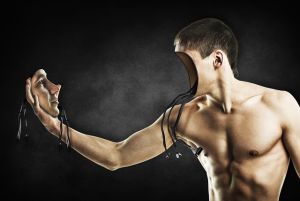Machines Can’t Replace The Human Touch – Literally
 In “Has Technology ‘Hit The Wall’ In Improving Customer Experience and Customer Service?” we examined the hypothesis that technology has hit a wall in terms of improving customer service.
In “Has Technology ‘Hit The Wall’ In Improving Customer Experience and Customer Service?” we examined the hypothesis that technology has hit a wall in terms of improving customer service.
While companies continue to rely on machines to cut human costs, that has rarely resulted in better service. In fact, we cited evidence that customer perceive service as worsening.
Now let’s look at some “hard caps” to why machines cannot replace humans in customer interactions with the outcome of a better customer experience.
Humans – A Face To Face Species
The evolutionary process (survival of the fittest and modifications of genetic endowment) resulted in a SOCIAL species where those that could use language to communicate with each other would win the evolutionary game and pass on their genes to offspring.
Humans are:
- touch sensitive
- smell sensitive
- have the ability to discern meaning from physical cues
- have the ability to read micro-muscle and large muscle body language
- Display an virtually infinite number of facial expressions
These are all aspects of live face to face interactions, and our ability to read each other is extraordinary.
While we may not be hard wired with a set of instructions on how to communicate, we are hard wired to learn those instructions, and in fact, in many ways humans require these kinds of stimulation to be healthy, and to feel connected to each other in a social group.
For example, we know that infants who do not experience adequate touching and cuddling fail to thrive, and suffer various developmental difficulties.
Touch and smell, two elements of communication between people, are essential to create a sense of wellbeing and are involved in the mating process.
And, if we look at what happens when all social contact is removed, as might be the case in solitary confinement, we find that few people can stay mentally healthy without human contact.
The Bottom Line: The Personal Touch
The bottom line is that we are hard wired to work best when we can use all our senses and abilities to communicate in social face to face situations that will develop positive emotional feelings, a sense of connection to others, mating and parental bonding, and so on.
No one sense, or skill set operates independently of other senses and communication skill sets.
In human interaction, people operate as “whole packages” where each package is the sum total of all our senses and communication skills, both innate and learned.
Machines Can’t Do It
While it’s possible to build a chat bot that appears to behave like a human online (until you look closely or challenge it with unprogrammed contexts), the machine isn’t operating like a human package – again, that uses all of the abilities connected to human evolution available in face to face conversation.
That’s not to say machines can’t be useful, or will not be useful. What it does say is that generally, humans will not be able to develop the same sense of connection, trust, etc. from interacting with a machine that we will from a well informed, flexible human being face to face.
Machines can be involved in transactional conversations (I want THIS, computer gives it to me), where the elements of connection, are minimal. However, if the goal is to provide interactions as part of the customer experience that are emotionally satisfying, thus building loyalty and trust, machines are too severely limited because they lack the “human package”, the ability to unify communication using all senses and human skill sets.
At least not yet, and perhaps not for the foreseeable future.
Unless computers can operate face to face, they cannot replicate human face to face conversation.
Yet, Companies Continue The Shift
Companies are continuing to jump in to replace humans with machines to interact with customers, because it’s a scalability issue, and a profit issue. Humans are expensive.
So we have an explanation as to why, as we interact more and more with machines in customer contexts, we are less and less happy with the interactions, resulting in the perceptions that customer service has gotten worse.
If The Goal Is Better Customer Experience….
…we need to reverse the trend away from well trained, committed staff. In fact that’s what the paragons of customer service – Zappos, certain hotel chains do. They use technology where technology fits, and the use humans to establish relationships that cannot be built with machines.
The customer service and experience winners will be companies that realize they must invest in their people, by selecting the right ones, training them and training them again, leading via strong customer centric values, and are lucky enough to have business models that can pay for the whole endeavor.
When companies do not invest in their people, they end up offering very poor face to face, (and phone) interactions, driving people to shop via machine.
When companies DO invest, they keep their customers, develop a reputation for excellence, and encourage people to interact with live staff, rather than machines that can, fundamentally, offer human beings the sense of connection, and emotional bonding that are part of our evolutionary history


